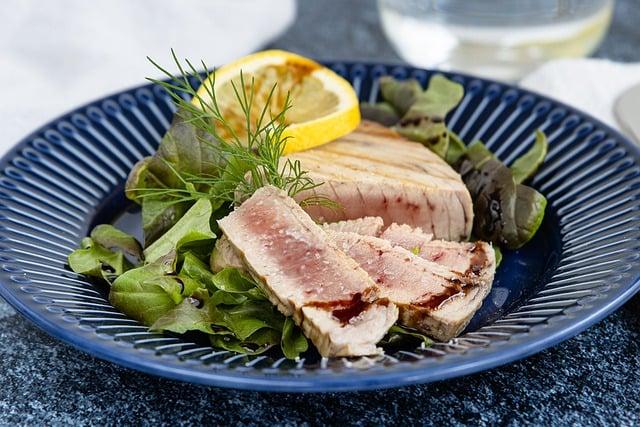One rainy afternoon, Sarah found herself staring at an empty cat food bowl. Her feline friend, Whiskers, meowed expectantly, his green eyes wide with hunger. In a moment of inspiration, she rummaged through her kitchen. A can of tuna caught her eye. With a quick rinse to remove excess salt, she served it up. Whiskers sniffed, then dove in, purring with delight. Sarah smiled, realizing that sometimes, a little creativity could turn a mealtime crisis into a tasty adventure. After all, love—and a bit of tuna—can fill any bowl.
Table of Contents
- Exploring Safe Human Foods for Your Feline Friend
- Nutritional Alternatives: Balancing Your Cats Diet
- Homemade Cat Meals: Simple Recipes to Try
- Understanding Food Safety: What to Avoid Feeding Your Cat
- Q&A
Exploring Safe Human Foods for Your Feline Friend
When you find yourself without cat food, it’s essential to know that there are several human foods that can safely satisfy your feline friend’s hunger. Cats are obligate carnivores, which means their diet primarily consists of meat. Therefore, lean meats are an excellent option. Consider offering small portions of cooked chicken, turkey, or even beef. Just ensure that the meat is plain, without any seasoning, sauces, or bones that could pose a choking hazard.
In addition to meats, certain fish can be a delightful treat for your cat. Cooked salmon or tuna can be enticing, but moderation is key. Fish should not be a staple in their diet, as it can lead to nutritional imbalances. Always opt for fresh, cooked fish, and avoid any that are raw or heavily processed. Remember to remove any skin or bones before serving to keep your furry companion safe.
While cats thrive on protein, they can also enjoy some fruits and vegetables in small amounts. **Carrots**, **peas**, and **pumpkin** are safe choices that can provide additional nutrients. You can steam or cook these veggies to make them easier for your cat to digest. As for fruits, **blueberries** and **cantaloupe** can be offered as occasional treats, but be cautious with the quantity, as not all fruits are suitable for feline consumption.
Lastly, dairy products can be a hit or miss with cats. While many cats love the taste of milk, it’s important to note that not all cats can digest lactose properly. If you want to offer a dairy treat, consider plain yogurt in small amounts, as it’s generally easier on their stomachs. Always observe your cat for any signs of discomfort after introducing new foods, and consult your veterinarian if you have any concerns about their diet.
Nutritional Alternatives: Balancing Your Cats Diet
When you find yourself without cat food, it’s essential to consider safe and nutritious alternatives that can keep your feline friend healthy and satisfied. Many common household foods can serve as temporary substitutes, but it’s crucial to choose wisely. Here are some options that can provide balanced nutrition:
- Cooked Meat: Plain, cooked chicken, turkey, or lean beef can be excellent sources of protein. Ensure there are no bones, skin, or seasoning, as these can be harmful to your cat.
- Fish: Canned tuna or salmon can be a delightful treat for your cat. However, it should only be given in moderation due to potential mercury content and the risk of developing a preference for fish over other foods.
- Eggs: Scrambled or boiled eggs are a great source of protein and can be a tasty addition to your cat’s diet. Just make sure they are fully cooked to avoid any risk of salmonella.
- Vegetables: While cats are obligate carnivores, some vegetables like cooked carrots, peas, or pumpkin can provide fiber and aid digestion. Always introduce new foods gradually to monitor for any adverse reactions.
In addition to these protein sources, incorporating carbohydrates can help create a more balanced meal. While cats don’t require carbs in the same way humans do, a small amount can be beneficial. Consider adding:
- Rice or Pasta: Plain, cooked rice or pasta can serve as a filler and provide energy. Ensure they are unseasoned and served in moderation.
- Potatoes: Cooked and mashed potatoes can be a good source of carbohydrates. Avoid adding butter or seasoning, and serve in small amounts.
Hydration is also a key component of your cat’s diet. If you’re using alternatives, ensure your cat has access to fresh water at all times. You can also consider:
- Broth: Low-sodium chicken or beef broth can be a flavorful way to encourage your cat to drink more water. Just ensure it contains no onions or garlic, which are toxic to cats.
- Wet Food Alternatives: If you have access to canned food for other pets, check the ingredients to ensure they are safe for cats. Look for options that are high in protein and low in fillers.
While these alternatives can be helpful in a pinch, it’s important to remember that they should not replace a complete and balanced cat food diet in the long term. Always consult with your veterinarian before making significant changes to your cat’s diet, especially if you plan to use these alternatives regularly. Keeping your cat’s nutritional needs in mind will help ensure they remain healthy and happy, even when their usual food is unavailable.
Homemade Cat Meals: Simple Recipes to Try
If you find yourself in a pinch without cat food, there are several homemade meals you can whip up using ingredients you likely have on hand. Cats are obligate carnivores, which means their diet should primarily consist of meat. Here are some simple recipes that can keep your feline friend satisfied:
- Chicken Delight: Boil some chicken breast until fully cooked, then shred it into small pieces. You can mix in a little bit of plain cooked rice or steamed carrots for added texture.
- Tuna Treat: If you have canned tuna in water, drain it and serve it to your cat as a special treat. Just be cautious with the quantity, as too much tuna can lead to mercury buildup.
- Egg Scramble: Whisk an egg and cook it in a non-stick pan without any oil or seasoning. Scramble it until fully cooked and let it cool before serving it to your cat.
- Beef Stew: Dice some lean beef and simmer it in water until tender. You can add some chopped vegetables like peas or carrots, but ensure they are safe for cats.
When preparing these meals, always ensure that the ingredients are fresh and free from any harmful additives. Avoid using onions, garlic, or any seasoning, as these can be toxic to cats. It’s also important to serve these meals in moderation, as they should not replace a balanced diet in the long run.
Remember to introduce any new food gradually to avoid upsetting your cat’s stomach. Start with small portions and observe how your cat reacts. If they enjoy the homemade meals, you can consider incorporating them into their diet occasionally, but always consult with your veterinarian for long-term feeding advice.
Creating homemade meals for your cat can be a fun and rewarding experience. Not only does it allow you to control the ingredients, but it also gives you the opportunity to bond with your pet over mealtime. Just be sure to keep their nutritional needs in mind and enjoy the process of cooking for your furry companion!
Understanding Food Safety: What to Avoid Feeding Your Cat
When it comes to keeping your feline friend healthy, understanding what not to feed them is just as crucial as knowing what to offer. Certain human foods can be harmful or even toxic to cats, leading to serious health issues. It’s essential to be aware of these foods to ensure your cat remains safe and happy.
Here are some common foods that should be avoided:
- Onions and Garlic: These can damage red blood cells and lead to anemia.
- Chocolate: Contains theobromine, which is toxic to cats and can cause heart problems.
- Grapes and Raisins: Even small amounts can lead to kidney failure in some cats.
- Alcohol: Even a small amount can be dangerous, leading to severe health complications.
Additionally, some seemingly harmless foods can also pose risks. For instance, dairy products may cause digestive upset in many cats, as most are lactose intolerant. Similarly, while cooked fish might seem like a treat, it should be given sparingly due to potential mercury content and the risk of bones causing choking or internal injury.
Lastly, be cautious with any processed foods or those high in salt and sugar. These can lead to obesity and other health issues over time. Always prioritize your cat’s well-being by sticking to safe, nutritious options and consulting with a veterinarian if you’re ever unsure about a particular food item.
Q&A
-
Can I feed my cat cooked meat?
Yes, cooked meat is a great option! You can offer your cat small pieces of chicken, turkey, or beef. Just ensure it’s plain, without any seasoning or sauces.
-
Is it safe to give my cat eggs?
Absolutely! Cooked eggs can be a nutritious treat for your cat. Scrambled or boiled eggs are best, but avoid raw eggs due to the risk of bacteria.
-
What about fish?
Fish can be a tasty alternative, but it should be cooked and boneless. Options like salmon or tuna are popular, but limit the quantity to avoid mercury exposure.
-
Can I give my cat vegetables?
Some vegetables are safe in moderation. Cooked carrots, peas, or pumpkin can be offered, but avoid onions, garlic, and other toxic veggies.
In a pinch, your pantry can be a treasure trove for your feline friend. Remember, while improvising is fine, always prioritize their health. With a little creativity, you can keep your cat happy and nourished until the next trip to the store!

大家好,我是彼得潘,專業的手法身體治療師。我喜歡探索和研究各種主題,並透過與人工智慧的合作分享專業、實用、有趣的文章。我們定期進行人工審核,以確保內容的準確性。如果您發現文章中有任何不準確的地方,請隨時與我們聯繫,我們會及時糾正。您可以透過 [email protected] 與我們聯繫。



